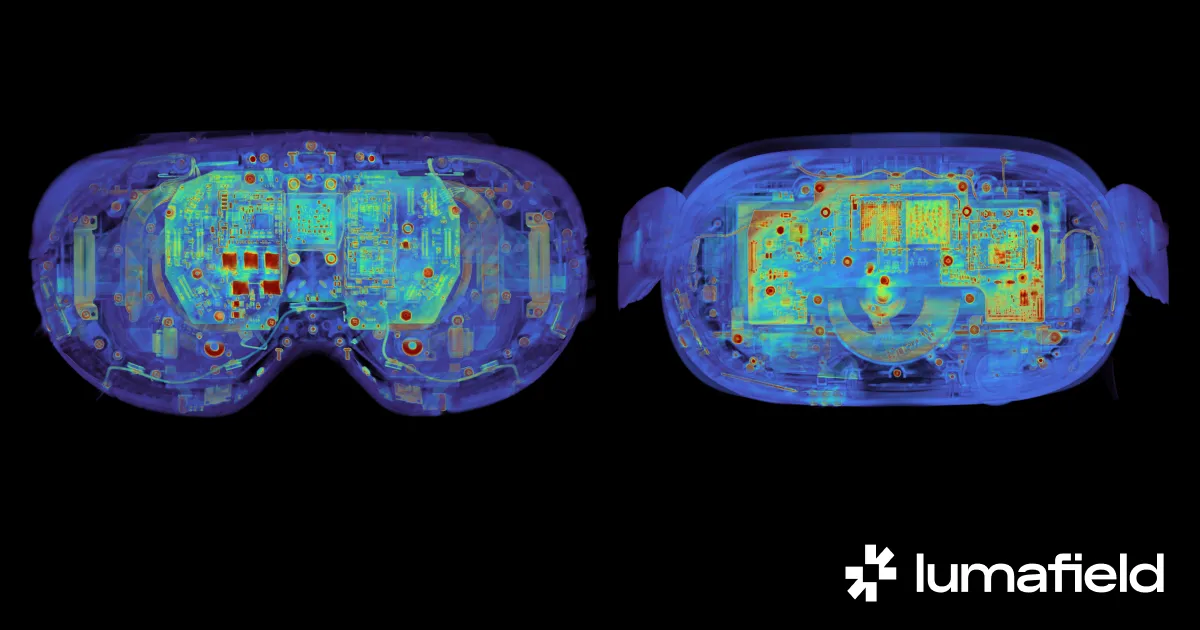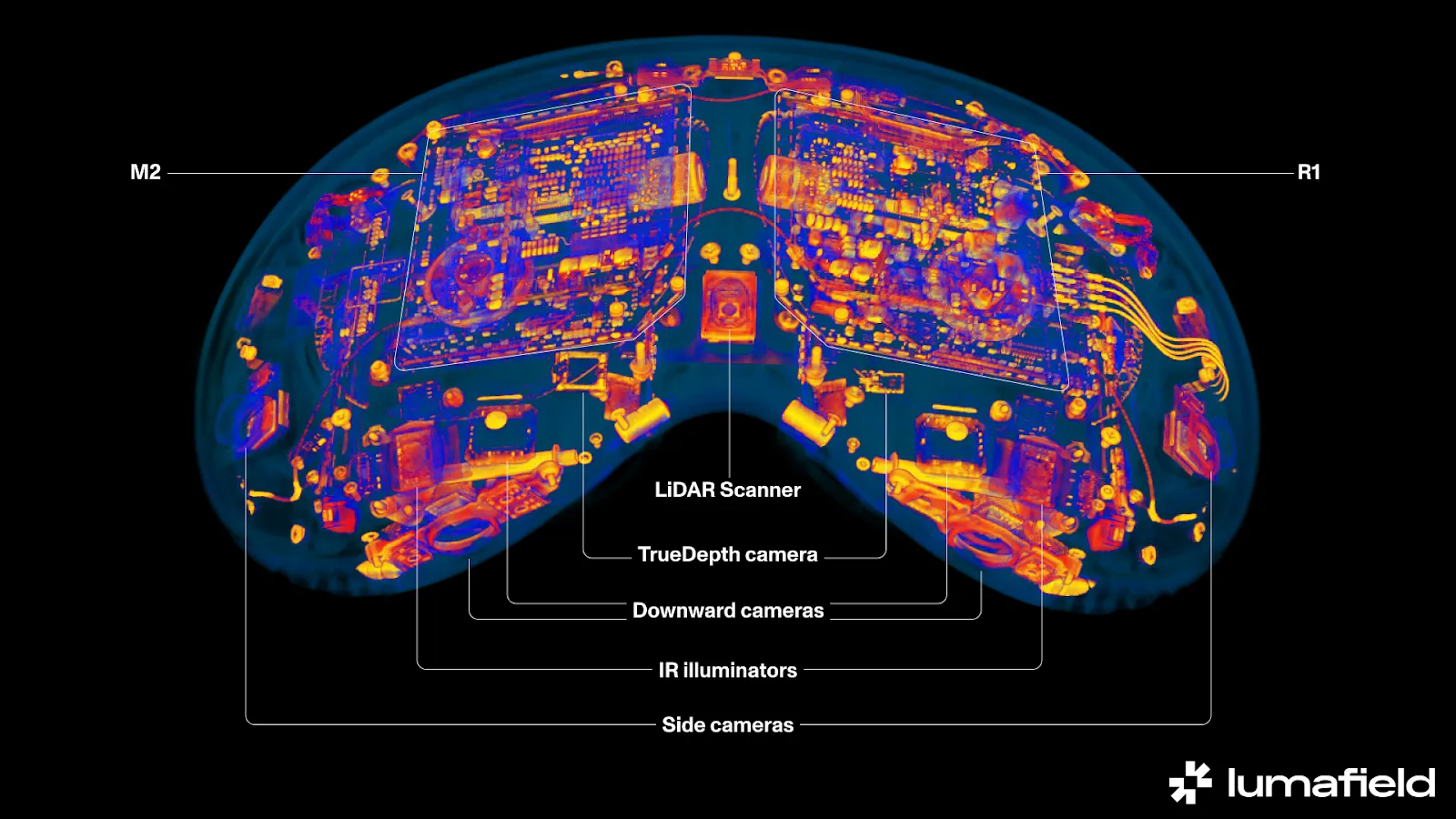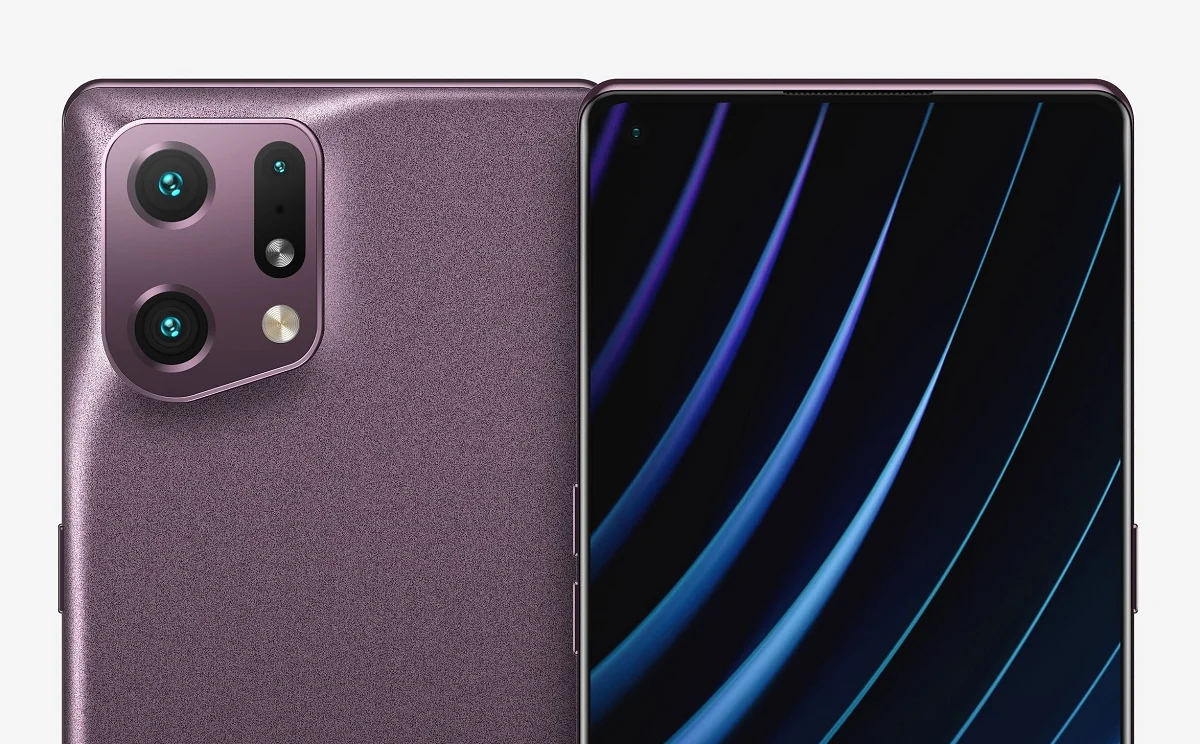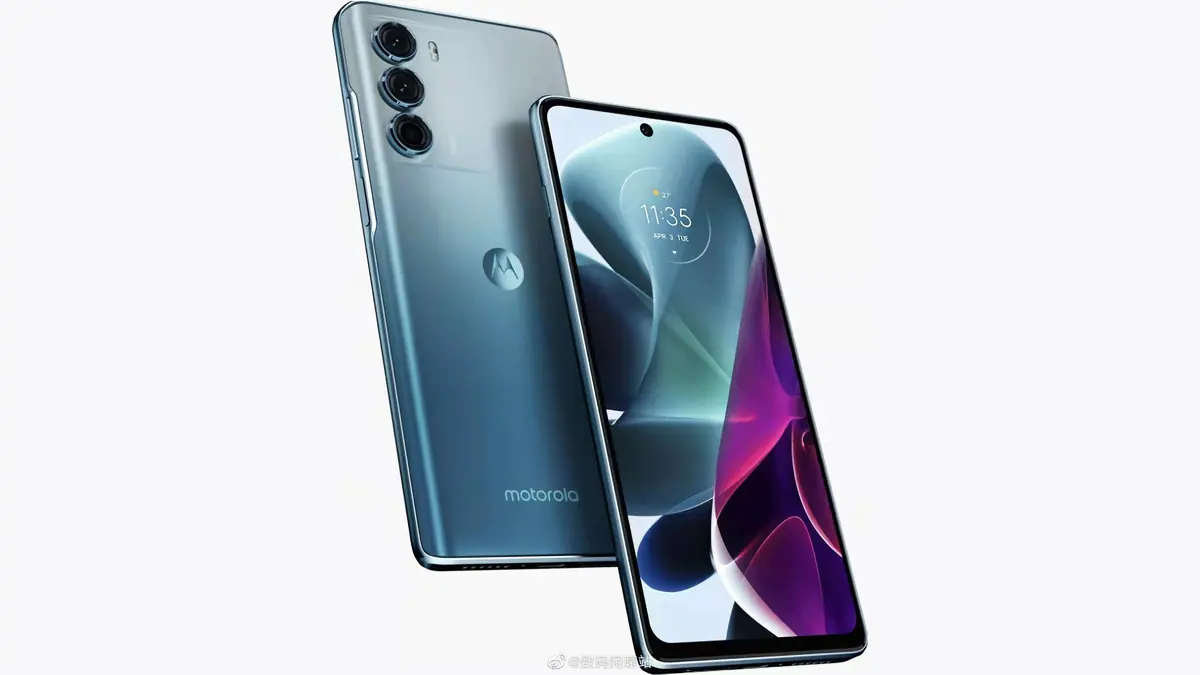Created using an industrial-grade CT scanner, the images give us a look at the precision engineering that has managed to fit all the cameras, multiple sensors, chips and other technologies inside the Vision Pro.
Detail
Along with the Vision Pro, the team also scanned the Meta Quest 3 and Meta Quest Pro and compared all these headsets. In conclusion, the authors noted that both Meta headsets deliver impressive cost savings. Them providing as much as possible while using as little as possible. In many ways, the devices’ affordable design and best-in-class value are as impressive a feat as Apple’s elegant concept.
The report states: For Apple Vision Pro, design comes first. Inside, everything is arranged to make maximum use of the available interior space., without distracting from the contours of the matte aluminum frame and laminated glass front panel. The main circuit board is built around a flexible printed circuit board, and the electronic parts are placed at different angles. However, in both Quest headsets, all body elements are placed on the same plane.
“Meta headsets don’t show much of a shift in emphasis, with the products having different priorities and targeting different markets. Apple, at least for now, is betting on early adopters who are willing to pay $3,500 for a new genre that focuses on ease of use and aims to democratize virtual reality.” “Meta, which has a design philosophy, offers its headset at a more affordable price. The price of Quest 3 is $ 500, that is, 1/7 of the Vision Pro.”– says the Lumafield post.
![]()

Meta Quest Pro (left) and Meta Quest 3 (right) / Photo: Lumafield
While all of these headsets have direct video capability, which is a live feed of what’s happening in front of you, none of them are ultimately glasses. These are screens that attach to your face.
- In the case of the Vision Pro, these are Sony displays. The screens, which Apple says have “more pixels per eye than a 4K TV”. To be precise, these are two micro OLED displays with a resolution of 3680×3140 pixels.
- The Quest Pro offers dual LCD panels with a resolution of 1800×1920 pixels per eye, while the Q3 has a resolution of 2064×2208 pixels.
![]()

Apple Vision Pro / Photo: Lumafield
The analysis, called non-destructive analysis, also offers a look at sensors, processors, batteries, thermal regulation and audio systems. One particularly eye-catching section is the large Vision Pro sensor array. Lumafield shows “a complex array of sensors including infrared cameras for eye tracking, LiDAR scanner, TrueDepth camera system (used for Face ID on other Apple devices), downward-facing cameras for hand tracking, and MEMS microphones for voice commands.
Saving the scan process: video














